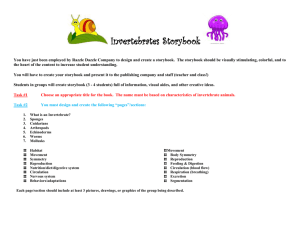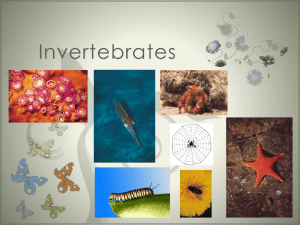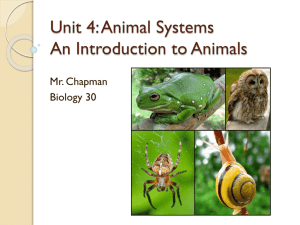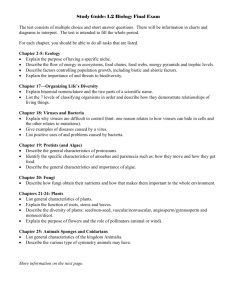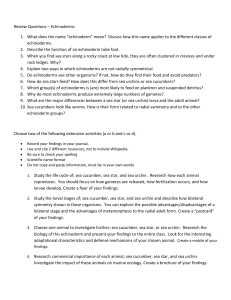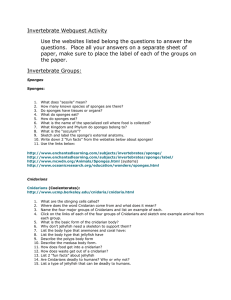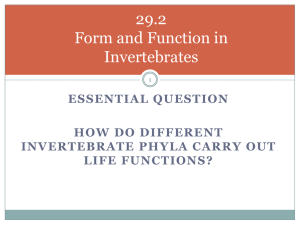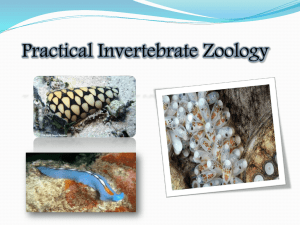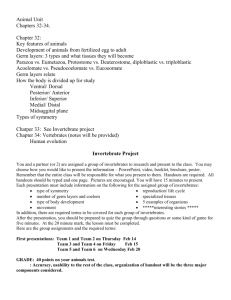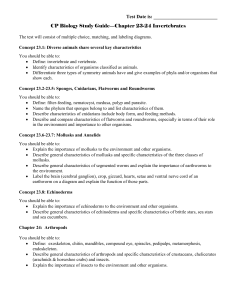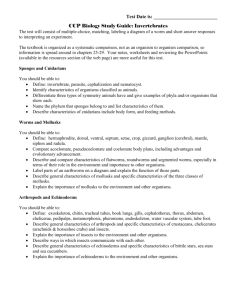2000 invertebrate
advertisement
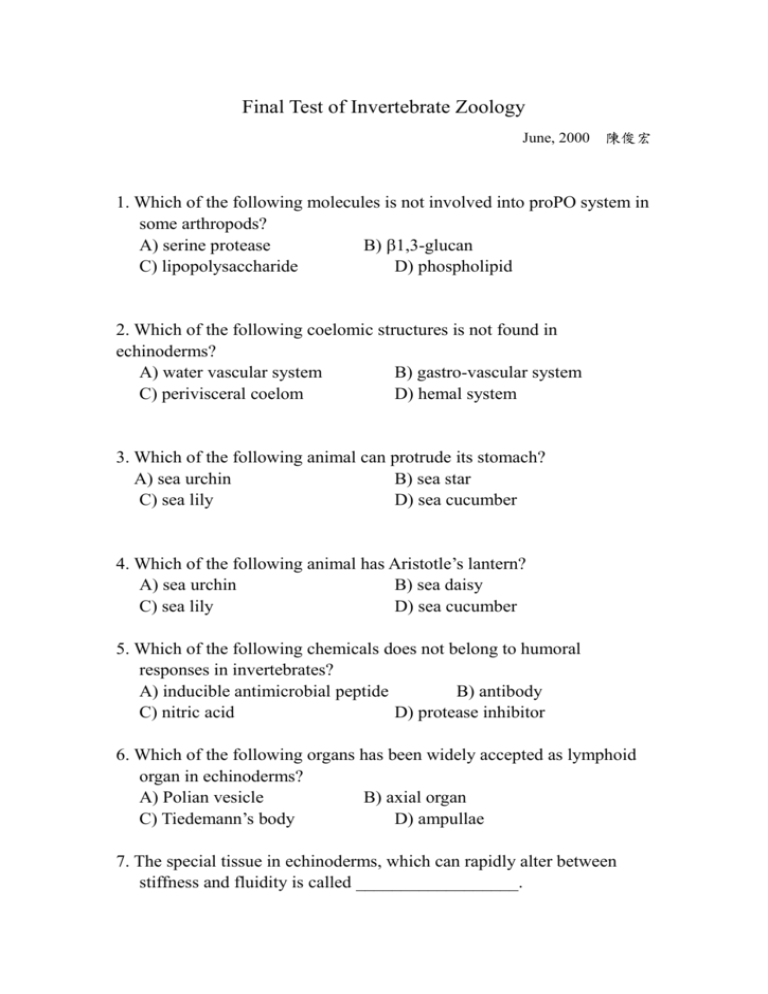
Final Test of Invertebrate Zoology June, 2000 陳俊宏 1. Which of the following molecules is not involved into proPO system in some arthropods? A) serine protease B) 1,3-glucan C) lipopolysaccharide D) phospholipid 2. Which of the following coelomic structures is not found in echinoderms? A) water vascular system B) gastro-vascular system C) perivisceral coelom D) hemal system 3. Which of the following animal can protrude its stomach? A) sea urchin B) sea star C) sea lily D) sea cucumber 4. Which of the following animal has Aristotle’s lantern? A) sea urchin B) sea daisy C) sea lily D) sea cucumber 5. Which of the following chemicals does not belong to humoral responses in invertebrates? A) inducible antimicrobial peptide B) antibody C) nitric acid D) protease inhibitor 6. Which of the following organs has been widely accepted as lymphoid organ in echinoderms? A) Polian vesicle B) axial organ C) Tiedemann’s body D) ampullae 7. The special tissue in echinoderms, which can rapidly alter between stiffness and fluidity is called __________________. 8. The opening of water vascular system is ____________________. 9. The tube feet of most echinoderms are located in ___________________. 10. Please fill-in the following spaces about the characters of Phylum Echinodermata. (5+14 points) Class or Subclass papulae bursae cirri +/- - arms + + + - pedicellaria Cuvierian tubule + + Concentricycloidea 11. Please establish a pictorial key to classify the following invertebrates: octopus nautilus, squid, and cuttlefish. (5 points) Midterm Test of Invertebrate Zoology (Part I) May, 2000 I. Multiple choice (2 points each): 1. Which of the following animals does not host symbiotic bacteria or algae inside their body? (A) Pogonophora (B) Anthozoa (C) Demospongiae (D) Polychaeta (E) Bivalvia 2. Which of the following molecules is not function as respiratory pigment in invertebrates? (A) hemoglobin (B) chlorocruorin (C) hemocyanin (D) hemoerythrin (E) myoglobin 3. Where is the site of molluscan for blood filtration to form the primary urea? (A) auricle (B) gill (C) nephridia (D) siphon (E) coelom 4. Which of the following invertebrates is hermaphroditic (A) sponge (B) coral (C) oyster (D) sea slug (E) jelly fish 5. Gemmule, a special structure to resist desiccation, presents in (A) Demospongiae (B) Calcarea (C) Polyplacophora (D) Echiura (E) Lamellibranchia 6. Which of the following pairing of structure – animal is incorrect? (A) captacula - Scaphopoda (B) byssus - Mytilus (C) spicule - Hexactinellida (D) velum - Cubozoa (E) gastric pouch - Scyphozoa 7. Which of the following structures does not belong to gastropods (A) visceral mass (B) columellar (C) radula (D) mantle (E) sugar gland 8. The antagonistic effect of adductor muscle in bivalves is (A) umbo (B) ligament (C) hinge (D) shell (E) pallial sinus 9. All of the following structures belong to cnidarians for defense except (A) acrorhagi (B) manubrium (C) acontia (D) dactylozooid (E) phyllozooid 10. Which of the following structures is not function for sensory (A) osphradium (B) setae (C) statocyst (D) ocellus (E) aesthete II. Fill-in (2 points each): 1. Sponges can be distinguished into ________________, _______________, and ______________ by their structural diversities. 2. Most Zoologists have accepted to merge _______________ and ______________ in Class Clitellata. 3. Sponges and cnidarians are diploblastic. Therefore, they do not have mesoderm. The middle layer between ectoderm and endoderm is called ______________ in sponges, and called _______________ in cnidarians. 4. There are three Subclasses in Gastropoda namely _________________, _________________ and ________________. III. Please establish a pictorial key to distinct the following five invertebrates: sea anemone, abalone, leech, chiton, and tube worm. (10 points)
